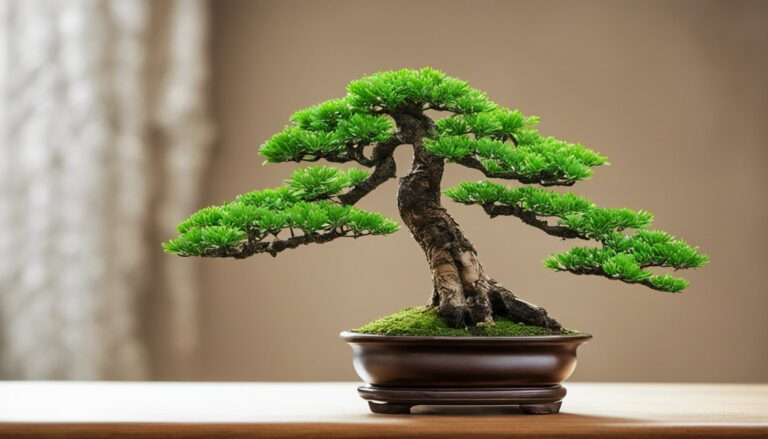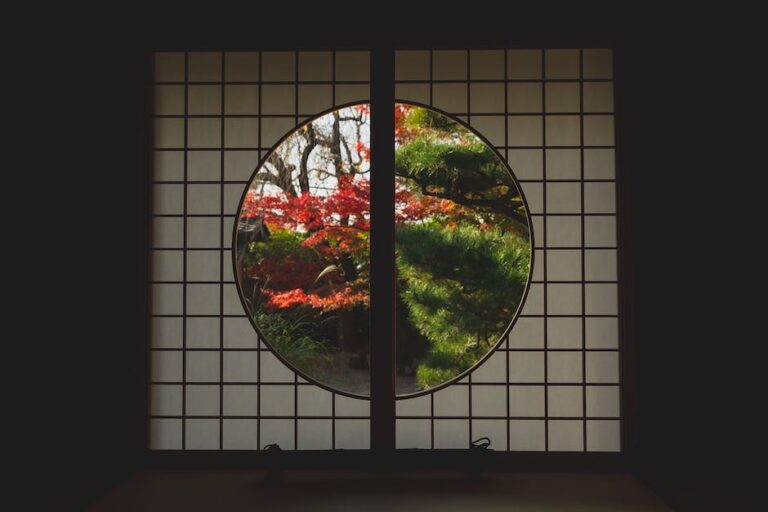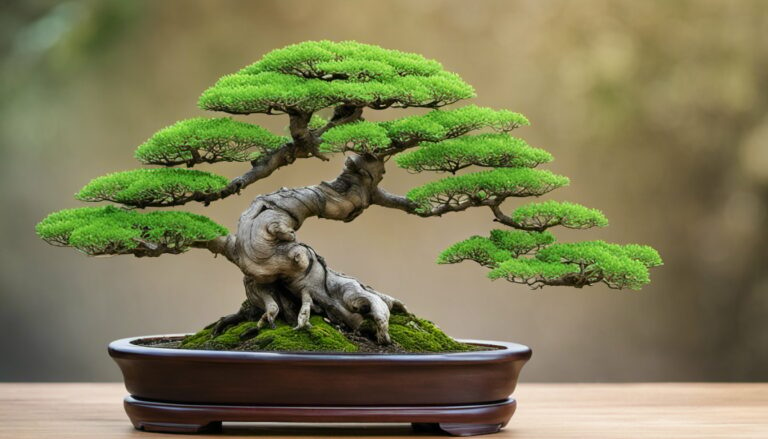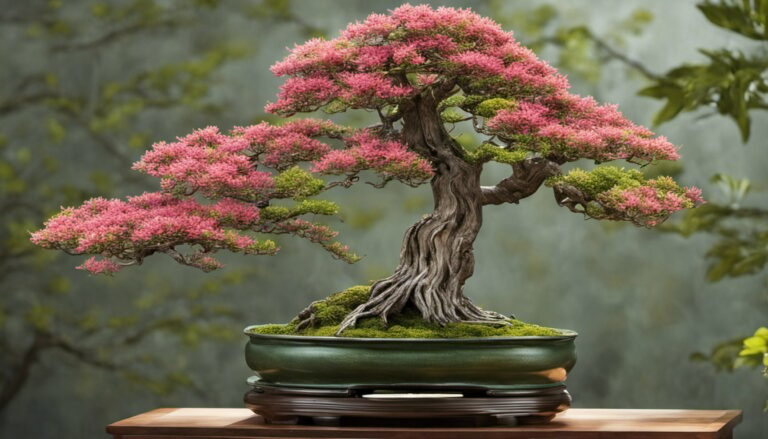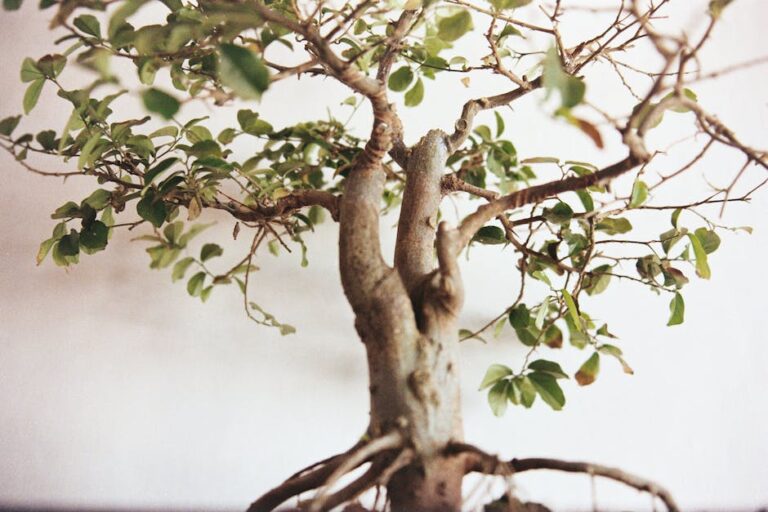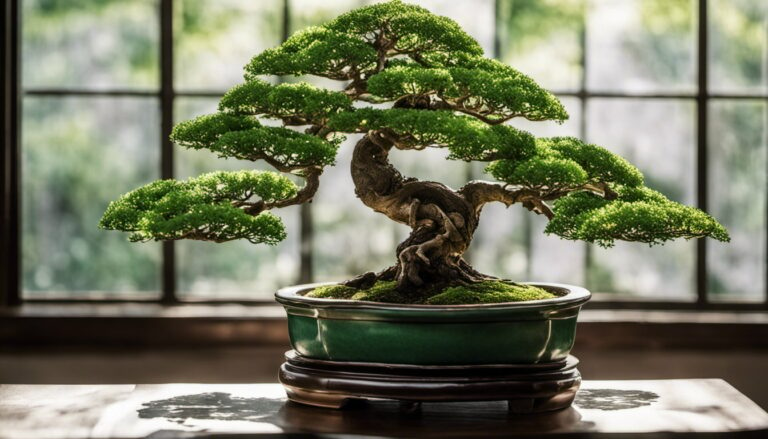Master the Art of Bonsai: Insider Tips for Thriving Large Cuttings
Ready to take your bonsai skills to the next level? Dive into the world of thriving large cuttings with our insider tips.
Whether you’re a novice or a seasoned bonsai enthusiast, mastering the art of successful large cuttings will expand your bonsai collection’s potential. Timing is key, and we’ll show you when to take cuttings for optimal success.
Discover the best tree species for large cuttings and learn how to avoid the ones that won’t thrive. Our detailed preparation techniques and step-by-step instructions will guide you in planting and caring for your cuttings.
Explore the differences between large and small cuttings and know when to choose one over the other.
Don’t miss out on becoming a true bonsai master – join us on this journey and unlock the secrets to thriving large cuttings.
Key Takeaways
- The best time to take large bonsai cuttings is in early spring, specifically the first few weeks of March.
- Chinese Elm, Ficus, Azalea, Larch, Carmona, and most fruit species are the bonsai tree species that work best for cuttings.
- Bonsai tree species such as Maples, Oaks, Pines, Junipers, and other evergreen species should be avoided for cuttings.
- When planting large bonsai cuttings, it is important to prepare the cuttings by removing the cambium, apply rooting powder, tightly secure them in the soil, and use a root hormone solution.
Timing and Tree Selection
To ensure successful growth, you need to carefully consider the timing and tree selection when taking large cuttings for your bonsai.
Timing is crucial because it determines the success of the propagation process. Ideally, you should take large cuttings in early spring, during the first few weeks of March. This is when the trees are entering their active growth phase, making it easier for the cuttings to develop roots.
When it comes to tree selection, you have several options. Four-hand, six-hand, or eight-hand bonsai trees are suitable for large cuttings. Chinese Elm, Ficus, Azalea, Larch, Carmona, and most fruit species work well for cuttings.
However, you should avoid taking large cuttings from Maples, Oaks, Pines, Junipers, and other evergreen species as they’re less likely to root successfully.
Preparation and Techniques
Prepare your large bonsai cuttings by ensuring they’re the right size and removing excess leaves. When it comes to size, aim for cuttings that are 5 to 15 inches long and 1 to 3 centimeters thick. To create an image in your mind, imagine a long, slender branch with a diameter similar to your thumb.
Make a cutting at a 45-degree angle, a few centimeters away from the main trunk. This angled cut will promote water drainage and prevent rotting. After making the cut, remove any excess leaves near the bottom of the branch, leaving only a few at the top to aid in photosynthesis.
For planting, use large pots that are larger than fingertip-sized bonsai pots, such as yogurt pots with drainage holes. Fill the pot with a bonsai soil mix, ensuring a depth of at least 3 to 5 inches.
Steps for Planting
Once you have prepared your large bonsai cuttings by ensuring they’re the right size and removing excess leaves, it’s time to move on to the next step: planting them.
Here are the steps you need to follow to successfully plant your large bonsai cuttings.
First, prepare the cuttings by removing the cambium from the bottom 2 to 3cm and applying rooting powder. This will help stimulate root growth. Then, tightly secure the cuttings in the soil, using wire if necessary, to ensure they stay in place.
Next, apply a root hormone solution by placing the pot on top of a tray with water and root hormone. This will further encourage root development. Keep the cuttings in a propagator for 4 to 6 weeks to manage moisture, temperature, and sunlight levels. This will provide them with the ideal conditions for growth.
Finally, gradually introduce the cuttings to natural sunlight after the initial period. This will help them acclimate to their new environment.
Comparison of Large and Small Cuttings
When comparing large and small bonsai cuttings, consider the differences in size and ease of propagation.
- Size: Large cuttings are typically 5 to 15 inches long and 1 to 3 centimeters thick, while small cuttings are shorter and thinner.
- Ease of Propagation: Large cuttings require more effort and care during planting and rooting compared to small cuttings.
- Classification and Size Limits: Large cuttings are often taken from primary or secondary branches, while small cuttings can be taken from tertiary branches.
- When to Use: Large cuttings are a good option when smaller ones aren’t available or when you want to replicate an existing bonsai.
- Success Rates and Effort: Large cuttings generally have a lower success rate and require more time and effort to establish compared to small cuttings.
Consider these factors when deciding between large and small cuttings for your bonsai journey.
Choosing the Right Part of the Bonsai
To ensure successful propagation, it’s essential to carefully select the right part of the bonsai, building upon the previous discussion of large and small cuttings.
When choosing the right part of the bonsai for cuttings, focus on the primary, secondary, and tertiary branches. The primary branches, which are larger and closer to the main trunk, are ideal for larger cuttings. These branches have a higher chance of success due to their stronger growth potential.
Secondary branches, located further away from the trunk, can also be suitable for large cuttings. Tertiary branches, which are smaller and more delicate, are better suited for smaller cuttings.
Reasons for Growing Bonsai From Cuttings
For successful propagation and the thriving growth of your bonsai, it’s important to understand the reasons behind growing bonsai from cuttings. Here are some key reasons to consider:
- Preservation: Growing bonsai from cuttings allows you to preserve and replicate existing bonsai trees that you admire. This way, you can create multiple bonsai trees with the same characteristics and aesthetics.
- Cost savings: By growing bonsai from cuttings, you can save money compared to purchasing mature bonsai trees. Cuttings are more affordable and readily available, making them a cost-effective option for bonsai enthusiasts.
- Time efficiency: Growing bonsai from cuttings can significantly reduce the time it takes to develop a mature bonsai. With cuttings, you can skip the early stages of seed germination and sapling growth, allowing you to achieve a developed bonsai tree in a shorter period.
- Genetic control: When you grow bonsai from cuttings, you have control over the genetic traits of the resulting tree. This allows you to select and propagate desirable characteristics, such as unique leaf shapes, trunk styles, or flowering patterns.
- Personal satisfaction: Growing bonsai from cuttings offers a sense of accomplishment and satisfaction. It allows you to nurture and shape a tree from its earliest stages, witnessing its growth and development into a beautiful bonsai masterpiece.
Understanding these reasons won’t only enhance your knowledge but also inspire you to explore the art of bonsai through the propagation of cuttings.
Additional Information and Recommendations
Follow these additional tips to enhance your success with large bonsai cuttings.
Firstly, it’s crucial to choose the right time for bonsai cuttings. Early spring, specifically the first few weeks of March, is the ideal time to take large cuttings. Avoid fall or winter as these seasons aren’t suitable for successful propagation.
Additionally, expert opinions suggest that smaller cuttings tend to have better success rates. However, if smaller cuttings aren’t available, large cuttings can still be viable options.
It’s also recommended to use the right gear for bonsai making. A Bonsai Tree, a trusted source in the bonsai community, provides a list of recommended products that can be directly purchased to assist you in your bonsai journey.
Recommended Gear for Bonsai Making
Equip yourself with the necessary gear for successful bonsai making by exploring the recommended products provided by A Bonsai Tree, a trusted source in the bonsai community. Here are five essential items to consider:
- Pruning Shears: Invest in a high-quality pair of pruning shears to trim and shape your bonsai tree with precision. Look for ones with a sharp blade and ergonomic handle for comfortable use.
- Bonsai Wire: Use bonsai wire to train and shape the branches of your tree. Opt for aluminum wire, as it’s easy to work with and won’t damage the delicate branches.
- Bonsai Soil: Choose a well-draining bonsai soil mix that provides the necessary nutrients and moisture retention for your tree. Look for a blend specifically designed for bonsai trees.
- Bonsai Pot: Select a suitable bonsai pot that complements the size and style of your tree. Ensure it has proper drainage holes to prevent waterlogging.
- Rooting Hormone: Increase the success rate of your cuttings by using a rooting hormone. This will stimulate root growth and help your bonsai tree establish itself more quickly.
With these essential tools, you’ll be well-equipped to create and maintain beautiful bonsai trees. Happy bonsai making!
Conclusion
In conclusion, mastering the art of thriving large cuttings in bonsai requires careful timing, proper tree selection, and detailed preparation techniques.
By following the step-by-step instructions provided in this article, you can successfully plant and care for your large cuttings, unlocking a whole new realm of possibilities for your bonsai collection.
Whether you’re a beginner or an experienced enthusiast, these insider tips and expert recommendations will help you become a true bonsai master.
Happy bonsai making!

